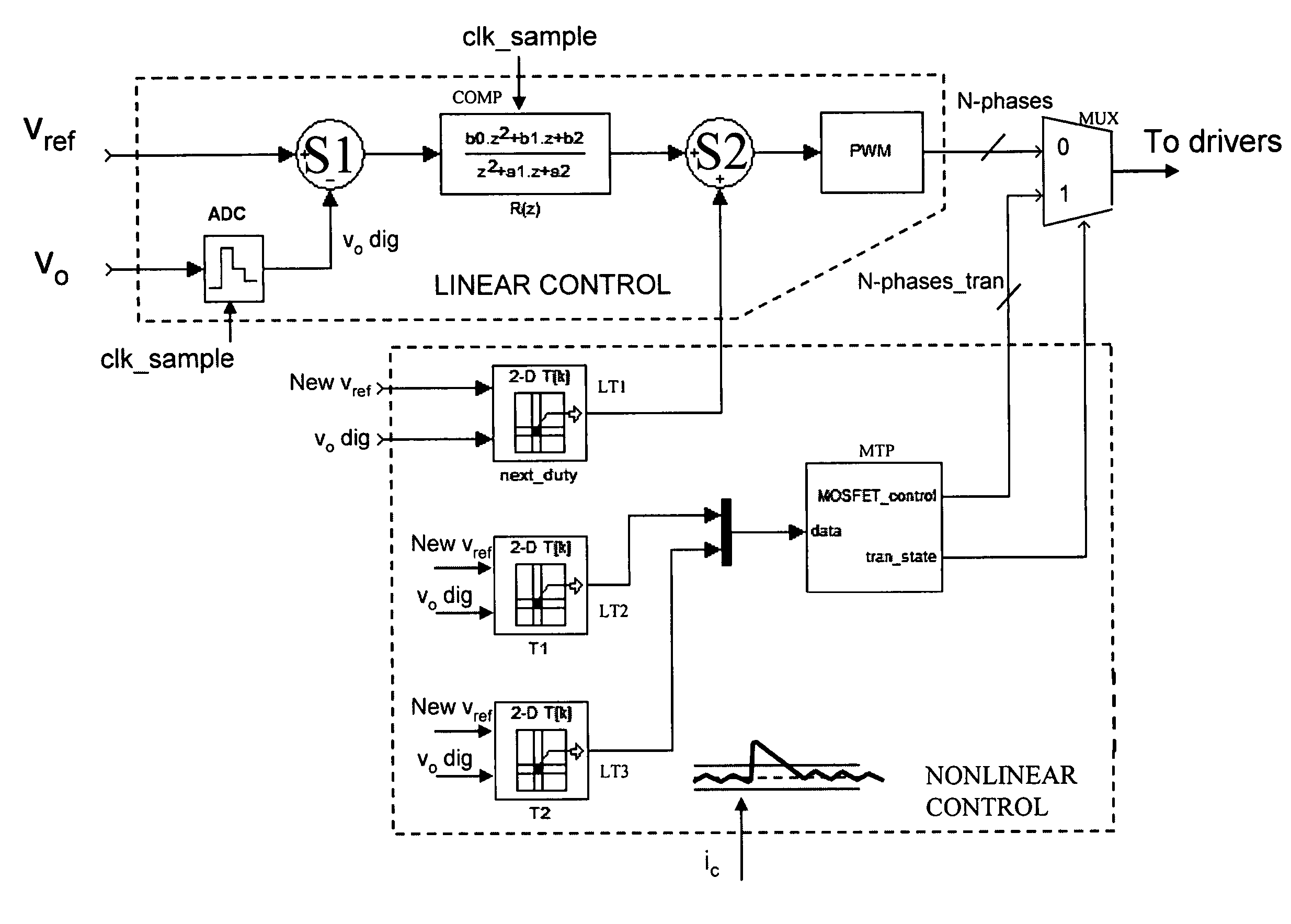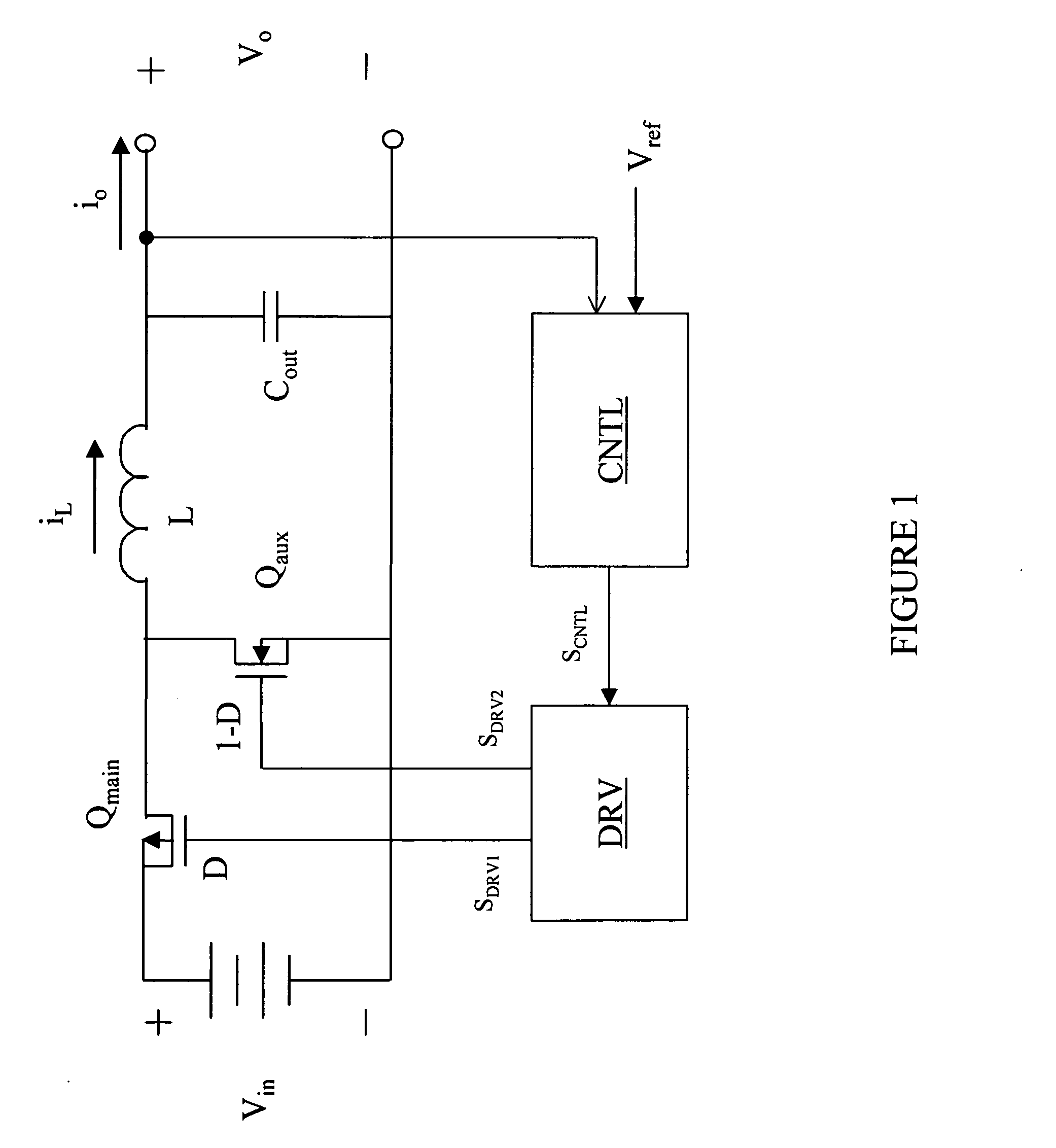Controller for a power converter and method of operating the same
a power converter and control board technology, applied in the field of power electronics, can solve the problems of increasing losses, limited dynamic response time, and incurring a reduction in power conversion efficiency and physical density produced,
- Summary
- Abstract
- Description
- Claims
- Application Information
AI Technical Summary
Benefits of technology
Problems solved by technology
Method used
Image
Examples
second embodiment
[0036] In a controller feedback of an output capacitor current is used to provide the necessary control loop bandwidth in a high-frequency power converter in a robust way, providing less sensitivity to noise and to circuit parameter uncertainties. In either case, the equivalent linear bandwidth is close to one MHz to meet extreme dynamic response requirements. The exemplary power converters described below follow the guidelines for dynamic voltage scaling and load step regulation as explained by A. Soto, et al. (“Soto”), in “Design Methodology for Dynamic Voltage Scaling in the Buck Converter,” published in the Proceedings of the IEEE Applied Power Electronics Conference, pp. 263-269, 2005, which is incorporated herein by reference.
first embodiment
[0037] In the first embodiment mentioned above, a fast action of a substantially ideal nonlinear control circuit is parallel-coupled with a linear control circuit. A difference with prior art implementations is that the linear control circuit is designed substantially at or near the maximum bandwidth that the power converter switching frequency allows, which in a practical design may be roughly one-fifth to one-tenth of the switching frequency. In this way, residual errors remaining after the nonlinear control response are corrected as fast as possible. A significant problem with combining a nonlinear control circuit with a linear control circuit is the control circuit interaction. Digital implementation eases combining the control circuit while allowing substantially maximum bandwidth for the linear control circuit.
[0038] Referring initially to FIG. 1, illustrated is a schematic diagram of an embodiment of a power converter constructed according to the principles of the present inv...
PUM
 Login to View More
Login to View More Abstract
Description
Claims
Application Information
 Login to View More
Login to View More - R&D
- Intellectual Property
- Life Sciences
- Materials
- Tech Scout
- Unparalleled Data Quality
- Higher Quality Content
- 60% Fewer Hallucinations
Browse by: Latest US Patents, China's latest patents, Technical Efficacy Thesaurus, Application Domain, Technology Topic, Popular Technical Reports.
© 2025 PatSnap. All rights reserved.Legal|Privacy policy|Modern Slavery Act Transparency Statement|Sitemap|About US| Contact US: help@patsnap.com



